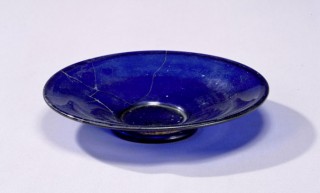Loading
Search
▼ This Beautiful Glass Dish Proves that Ancient Rome Traded with Japan
- Category:Other

KINJA
Over 1600 years ago, this deep blue glass dish made its way from a Mediterranean workshop, across Central Asia, to its final resting place in a 5th century Japanese grave. The journey may have taken over a century, and gives us a glimpse of what trade was like in the early days of the Silk Road.
Other artifacts have turned up that suggest that objects sometimes made their way all the way from the far east, to the far west, across the Eurasian continent. But thanks to new technologies that allowed scientists to date and source materials in this dish, we can be certain that it originated somewhere near ancient Rome (possibly in the city itself). It was then carried by traders through the ancient Persian Sassanid empire, across Central Asia and China, and finally over the sea to Japan. It's also likely that the dish was made at least a century before it was buried with its owner, and possibly a couple of centuries.
Archaeologist Takashi Taniichi, an expert in Silk Road history, told the Asahi Shumbun:
Japan aggressively traded with other countries in the fifth century, and [the latest findings] show various elements were entering Japan at the time. Because the glass dish may have been transported via Central Asia, it is no wonder that there was a time lag [between its production and arrival in Japan].
It's incredible to imagine a trade network where goods might take a century to slowly work their way from one end to the other. And yet that would have been the reality at a time when travel was uncertain and dangerous. What's likely is that this plate was sold from one merchant to another, possibly remaining in one place for decades before being sold down the road. Its journey was probably as astonishing to people then as it is to us today.
- November 25, 2014
- Comment (0)
- Trackback(0)

